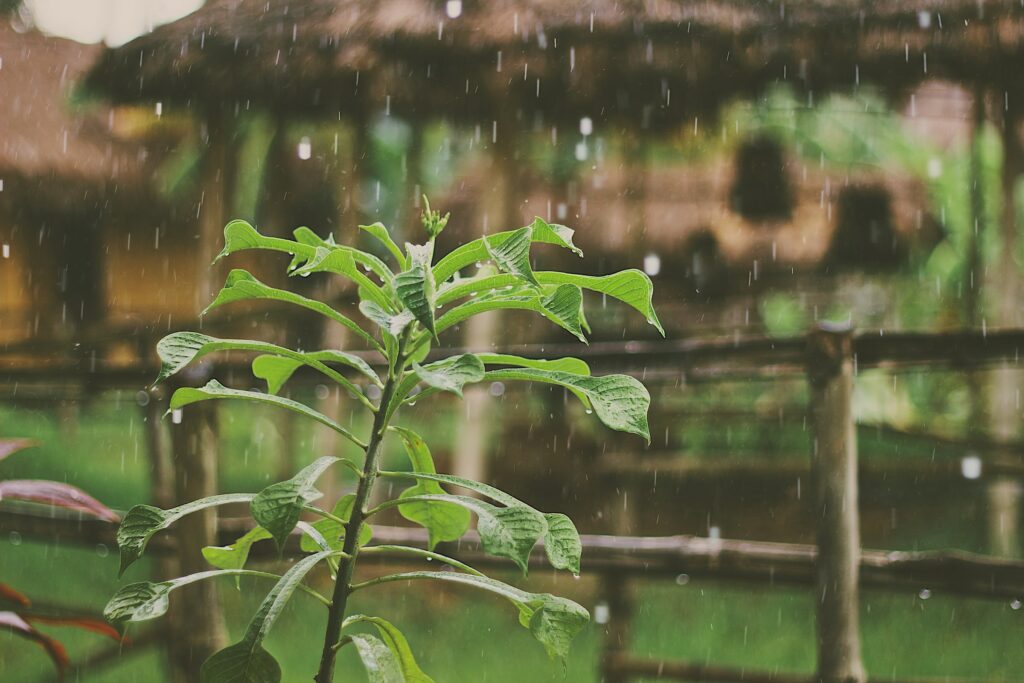When it rains a lot, does the place turn into a swamp? Are the walkways strewn with puddles? This has a negative impact on more than just looks. Plants suffer, the basement becomes hot, mold develops, and the foundation crumbles rainwater.
Here are 5 techniques to get rid of extra water after a shower. We’ll progress from basic to advanced.
Method 1: Drainage Ditch
The lowest portion of the local area is usually flooded after a downpour. Dig a shallow and shallow ditch to reroute water flows from there.

Remember to account for a 1-2 percent slope by placing a bubble level on the bottom and ensuring that the bubble contacts either the first or second risk.
Water should flow from your yard through a ditch and into a rain garden or a collection well.
Although the ditch’s primary function is to reroute flows, it can also absorb part of the water. To do this, pour pebbles into the channel’s bottom and plant deep-rooted plants on the slopes to slow the flow. For a beautiful landscape element, use boulders and bridges. Even when dry, the ditch will look lovely with adequate planting.
Method 2: Create A Rain Garden
If the property has a lowland where a lot of water runs during a downpour, create a rain garden there.
In most gardens, moisture-loving plants are planted. Sedge, coaching, and other plants with long fibrous roots that can withstand water can be planted in the center. Plant red dogwood and other plants that can withstand infrequent floods and don’t require upkeep between floods around them. Coniferous and deciduous bushes grow around the edges, preferring drier conditions.
A rain garden must not become a pond. Water collects here but eventually drains into the ground. Other methods of drainage, such as collector wells, can be connected to it.
Method 3: The Collector Well
A collecting well (also known as drainage or dry well) is a useful tool for returning water to the soil. It’s just a regular pit in its most basic form. It’s made of gravel or porous material that may contain water until it soaks into the earth.
A specific plastic collector well can also be purchased. This barrel has openings in the bottom and sides and holds 100-150 liters. During rainfall, water rushes into the barrel through small channels, then eventually into the soil through the holes. The walls and bottom of the hole in which the barrel is put should be lined with gravel or porous material to ensure drainage.
This dry well should hold enough rainwater to capture the first 15-20 minutes of heavy rain. If one of the barrels is missing, a replacement can be installed next to it. The collector well can be connected to a French drain if the soil can’t hold 100 liters of rainwater.
Method 4: Drainage In The French Style
This is a drain that has an entry but does not have to have an exit. It’s a perforated pipe, to be precise. Rainwater can escape via numerous holes along the length of the pipe and into the earth.
To prevent dirt and sand from clogging the pipe, it is normally made of lightweight, flexible plastic and encased with a cloth sock.

The pipe is buried in a trench with gravel or polystyrene absorbent material on the walls and bottom.
There is no need to dig a trench. Water can flow into the drain down the entire length of the pipe if long and narrow grates are installed on top.
Method 5: Closed Sewer Strom
Install an underground non-perforated drainpipe if the above procedures fail. Such a pipe has a flat grate at the entrance and then travels underground, redirecting water to the discharge point – a common village ditch or the same collection wells. This will undoubtedly address the drainage issue, but it will necessitate extensive digging.
Water will only drain if the drain point is below the inflow point because this sort of drainage does not require a pump. As a result, you’ll need to dig a trench with a slope of at least 1 centimeter by 1 meter to generate drainage (use a building level).
The trench is 30 to 50 centimeters deep. A trench is dug with geotextiles and gravel, and a sand cushion 10-20 cm thick is built at the bottom to keep the pipe from freezing.
A grate is built at the entrance to prevent the pipe from being clogged, and a sand trap is constructed at the pipe’s connection with the collector well to prevent the pipe from becoming clogged. An inspection hatch must be created in these spots if the pipe is bent or numerous pipes are joined into one so that the blockage can be removed.
Things around your house are taken care of by us so you don’t have to worry about them. Call us today!


Recent Comments